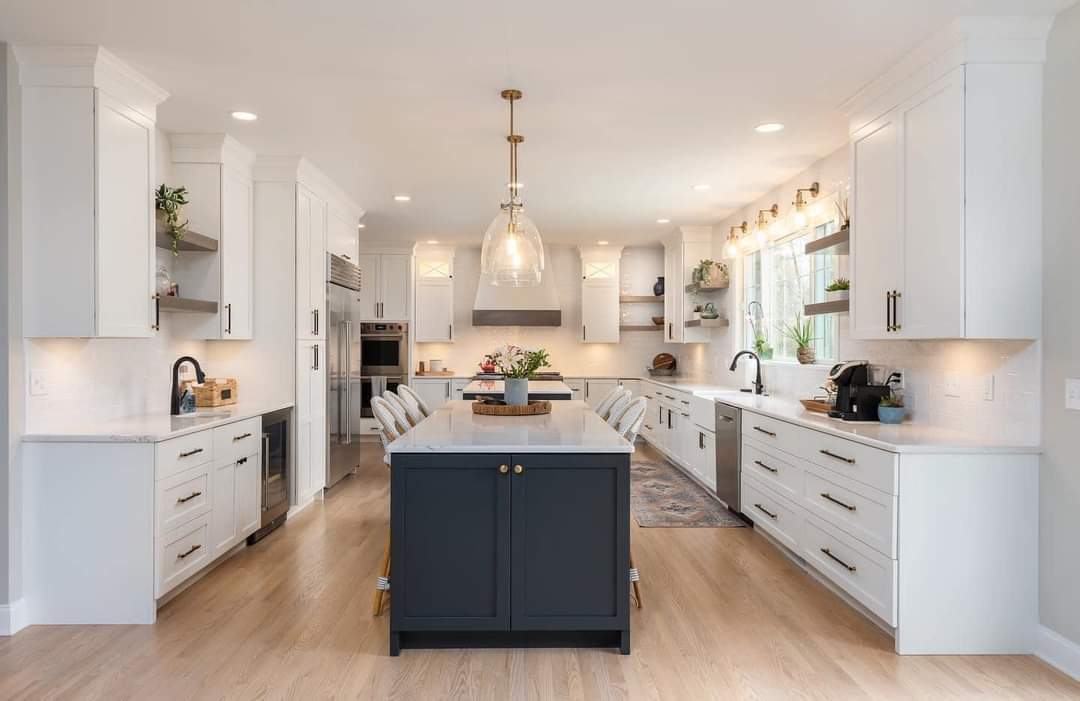The clanging of a dropped pot echoed through my kitchen, momentarily startling the ginger cat basking in a sunbeam. But it wasn’t the clatter that sent a jolt through me – it was the sickening crack that followed. My gaze darted to the culprit: the cabinet door beneath the sink, now sporting a jagged scar splitting its oak surface.
This wasn’t the first sign of wear and tear my once-proud cabinets had endured. Over the years, the finish had faded, nicks and scratches accumulated like battle wounds, and a persistent creak had developed in one of the hinges. But this crack – this was a declaration of war.
Repair or replace? The question loomed large, threatening to swallow my already-strained budget. With a determined sigh, I embarked on a quest to find the answer, a journey filled with research, DIY tutorials, and the sage advice of a seasoned carpenter friend.
The Case for Repair: A Budget-Friendly Fix
My initial instinct, fueled by a healthy dose of frugality, was to repair the damage. The internet, a treasure trove of information (and sometimes questionable advice), became my battleground. I delved into articles on wood putty, sanding techniques, and the magic of stain revival kits.
The more I researched, the more I discovered. Repairing the crack seemed manageable – a weekend project fueled by elbow grease and YouTube tutorials. Replacing the entire cabinet door, however, meant venturing into pricier territory, not to mention the additional cost of hardware and potential customization challenges.
Here’s what swayed me towards the repair route initially:
- Cost-Effectiveness: Replacing an entire cabinet, even a single door, would undeniably cost more than a repair job. Patching up the crack and refinishing the door could potentially be a fraction of the price.
- Sentimental Value: These cabinets had housed countless meals, witnessed late-night baking sessions, and held the remnants of childhood crafting projects. There was a certain charm in their worn features, a history etched in every nick and scratch. Replacing them felt like erasing a part of the kitchen’s soul.
- DIY Appeal: The prospect of tackling a repair project held a certain allure. The idea of breathing new life into the cabinets with my own two hands, of conquering this domestic challenge, was strangely invigorating.
The Allure of Replacement: A Modern Makeover
However, as I delved deeper, the potential benefits of replacement started to shine. My research revealed a world of new cabinet possibilities. Modern styles with sleek finishes, innovative storage solutions, and features like soft-close hinges beckoned.
The allure of a complete kitchen makeover, while initially daunting, started to simmer. Here’s what replacement offered:
- Improved Functionality: My existing cabinets lacked some modern conveniences, like pull-out drawers for easy access to deep shelves. Replacing them could present an opportunity to upgrade the functionality of the kitchen.
- Enhanced Aesthetics: Let’s face it, my cabinets were tired. A complete replacement could transform the entire kitchen, giving it a fresh, modern look. This could potentially increase the value of my home, a factor to consider, especially if I was thinking long-term.
- Durability: Replacing the cabinets with high-quality materials could ensure they would withstand the wear and tear of daily use for years to come.
Consulting the Wise Old Carpenter
Torn between the allure of a budget-friendly fix and the dream of a complete kitchen overhaul, I decided to enlist the wisdom of my carpenter friend, Bob. A man with a calloused hand for every nick he’d filled and a twinkle in his eye for a good project, Bob surveyed the scene with a practiced eye.
He assessed the crack, noting its depth and the surrounding wood damage. “Repairing is certainly doable,” he said, “but with this much wear and tear, the results might not be perfect. You’d be looking more at a restoration project than a simple fix.”
His words resonated. Did I truly want to invest time and effort into a repair that might not fully revive the cabinets?
Bob then opened my eyes to a middle ground I hadn’t considered. “Have you thought about refacing?” he asked. Refacing, I learned, involved replacing the cabinet doors and drawer fronts with new ones, while keeping the existing cabinet boxes. It offered a cost-effective way to achieve a more modern look without the complete overhaul of a full replacement.
The Verdict: A Kitchen Fit for the Future
After much deliberation (and a healthy dose of inspiration from kitchen renovation shows), I decided on a combination approach. I would replace the damaged cabinet door and explore refacing the rest of the cabinets. This approach would give me the best of both worlds.

